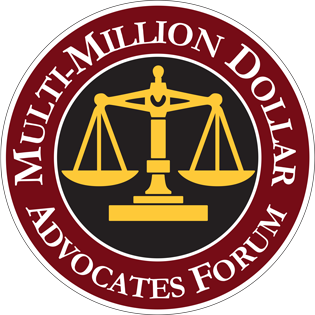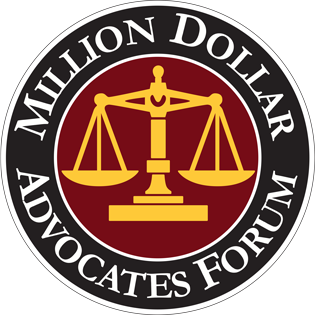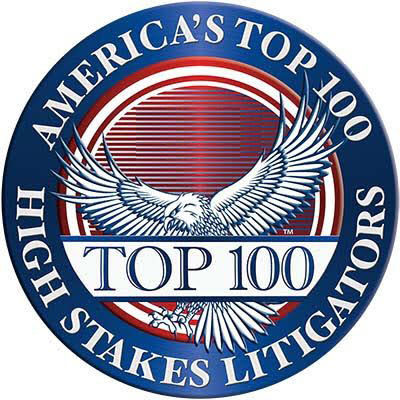Call For A Free Consultation
415-897-4801
Novato Corporate Office (Mailing Address):
10 Commercial Blvd #206 Novato, CA 94949
Offices Located In San Francisco, Oakland, San Jose, Walnut Creek, Pleasanton, Santa Rosa, Napa, Redwood City, Sacramento and Newark
10 Most Dangerous Situations For Cyclists (And How to Survive Them)
Riding a bicycle offers many benefits – it’s good exercise, environmentally friendly, and can be a fun recreational activity. However, cycling also comes with risks, as bike riders share the road with much larger and faster-moving vehicles. Accidents can happen in an instant, leading to serious injuries or worse.
To stay as safe as possible, it’s important for cyclists to be aware of the most hazardous situations they may encounter. This allows you to take precautions, be alert, and handle the dangers properly. Here are ten of the most dangerous circumstances for those on bikes, along with tips on how to get through them safely.
1. Sharing the Road with Busy Traffic
Perhaps the most universally perilous scenario is simply riding alongside heavy traffic. Motorists are often distracted, impatient, or fail to notice bicyclists. Sudden lane changes, cars pulling out in front, or high speed traffic can lead to disastrous collisions.
When sharing the road, maximize space between yourself and vehicles. Ride in designated bike lanes whenever possible. Use flashing lights and reflective gear to stand out. Make eye contact with drivers and be prepared to brake. Avoid roads and times with congested traffic. Follow all traffic laws and signs.
2. Dangerous Intersections
Intersections with traffic lights or stop signs are high-risk areas, as multiple vehicles cross paths and may fail to yield. Drivers can run red lights or stop signs, turn into oncoming bikes, or block crosswalks.
Approach intersections with extreme caution. Slow down, cover brakes, and scan all directions for oncoming cars. Make your intentions clear with hand signals. Wait for vehicles to fully stop before proceeding. When possible, make eye contact with motorists to ensure they see you. Avoid riding alongside cars or in blind spots.
3. Speeding Downhill
While coasting downhill can be thrilling, high speeds make control difficult. Excess speed reduces reaction time to hazards ahead. It also adds force to potential impacts, increasing the severity of injuries.
Control speed by intermittently braking when descending steep hills. Do not use handles or aero bars going downhill. Make sure to wear a helmet. Remain alert for changing road conditions or obstacles ahead. Avoid extremely curved or pothole-filled roads. If your speed becomes uncomfortably fast, pull off the roadway and stop until it’s safe to continue.
4. Dangerous Passing
Being passed by faster vehicles is inevitable. But motorists can misjudge distance and clip handlebars or sideswipe bikes. Sudden passing on narrow roads or high speed passing can knock bicyclists off balance.
Hold your line when vehicles are overtaking. Do not move left or right unexpectedly. Pull off the roadway if a passing car leaves insufficient space. Use a mirror to monitor passing vehicles. Maintain a slower speed on narrow shoulders. Wear bright clothing to be visible. Passing multiple bicyclists? Wait until the full group has passed.
5. Car Doors Opening
Parked cars pose a hazard, as drivers can open doors into the paths of cyclists. Known as “dooring,” this can knock riders into traffic or cause serious falls. Bicyclists may be tempted to ride close to parked cars to avoid traffic, increasing chances of impact.
When passing parked cars, ride outside the door zone. Scan inside vehicles for movement. Slow way down or stop if you anticipate a door opening. Drivers should use the hand farthest from traffic to open doors. Look before opening fully. Cyclists should ride at least 3 feet from parked cars. Use bike lanes when available.
6. Poorly Maintained Roads and Trails
Potholes, broken glass, storm debris, loose gravel, protruding grates, and other roadway hazards can lead to crashes, punctured tires, or flipped bikes. Poorly maintained off-road trails also pose risks like downed trees, eroded hills, and obscured holes.
Scan ahead for any roadway hazards and avoid them. Report recurring problems to transportation departments. Learn to safely ride over obstacles when unavoidable. Use wider tires with some tread and keep tires properly inflated. Reduce speed and grip breaks on gravel or dirt trails. Avoid using roads or paths with large hazards that can’t be navigated.
7. Inadequate Bike Handling Skills
Lack of bicycling skill and experience can lead to mishaps, especially amid traffic. Insufficient braking, steering, balancing, or obstacle avoidance abilities could cause accidents. Children and casual riders are at high risk.
Take a bike safety course to hone your skills. Practice braking, scanning, signaling, balance, and scanning. Adjust seat and handlebar height for proper control. Use brakes properly, front brake for gradual stopping and rear for quicker. Keep both hands ready near the brakes when in traffic. Walk the bike across extremely hazardous intersections.
8. Biking While Distracted
Talking on phones, texting, listening to music, or anything that diverts attention can compromise safety while biking. Reacting to sudden dangers becomes nearly impossible. This includes distracted driving by others as well.
Never use phones or headphones when cycling. Pull off the road if you need to text, call, or change music. Keep your eyes and ears open. Use voice directions if absolutely necessary. Be very cautious around distracted pedestrians. Warn others if you see distracted drivers.
9. Not Following Bike Laws
Disobeying traffic laws can infuriate drivers and lead to collisions. Running lights or stop signs, weaving through traffic, or riding against flow are all extremely dangerous. Drivers don’t expect bikes to break laws.
Obey all signs, signals, and lane markings. Stop and look both ways at intersections. Use hand turn signals. Ride with traffic, never against it. Pull off roads if paths become unsafe before breaking laws. Walk bike across intersections if uncertain. Set an example for children on bike laws.
10. Fatigue While Riding
Riding a bicycle is exercise, and fatigue inevitably sets in. However, exhausted cyclists can lose coordination or the ability to react quickly. Nighttime or long-distance rides increase fatigue dangers.
Know your limits and don’t overdo distance. Take regular breaks to rest and refuel. Maintain your bike to prevent mechanical problems from tiring you out. Use flashing lights when riding at dusk or night. Stop and rest if you feel especially tired. Walk the bike once exhaustion becomes severe. Avoid roads with high speed traffic when fatigued.
Seeking Help After A Bicycle Accident
If an accident does occur, seek medical help immediately even for seemingly minor injuries, which can worsen over time. For legal help determining fault and pursuing compensation for injuries or damages, contact an experienced bicycle accident attorney. A lawyer can manage insurance claims, negotiations, and litigation so you can focus on recovery. They will determine negligence and actions that contributed to the accident, pursue fair compensation, and protect your legal rights.
If you’ve been involved in a bicycle accident, contact us today to see how we can help. You can visit our offices at:
- 10 Commercial Blvd, #206 Novato, CA 94949
- 75 Broadway #202, San Francisco, CA 94111
- 3558 Round Barn Blvd, Suite 200, Santa Rosa, CA 95403
Or call us today for a free consultation on (415) 897-4801.
Want A Free Consultation?
© 2025 Rush Injury Law. All Rights Reserved.














